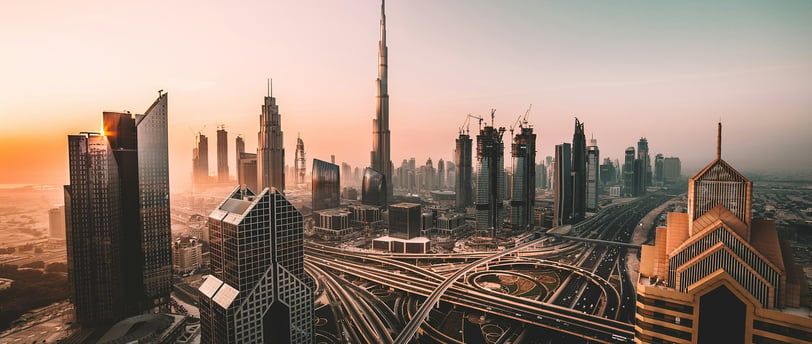Dubai 2040 more than a vision
Dubai city project in 2040 with all the clear objectives of increasing green spaces and all other objectives in advance
7/18/20253 min read


Dubai 2040: An ambitious and sustainable urban vision
Dubai continues to reinvent itself. Its "Dubai Urban Master Plan 2040," launched by His Highness Sheikh Mohammed bin Rashid Al Maktoum in 2021, embodies one of the most advanced urban development strategies in the world. This program outlines the emirate's evolution over the next 15 years, with a strong ambition: to make Dubai an even more livable, sustainable, connected, and globally competitive city.
A population expected to double
Today, Dubai's population is between 3.6 and 4 million. By 2040, it is expected to reach approximately 5.8 million permanent residents, and up to 7.8 to 8 million, taking into account seasonal flows related to tourism and business.
This population growth is not only expected, it is anticipated and planned for. Dubai is committed to continuing to attract international talent, investors, and entrepreneurs. It is focusing on key sectors such as finance, technology, tourism, healthcare, and renewable energy to support this expansion.
A sharp increase in green spaces
One of the major pillars of the 2040 plan is improving quality of life, particularly through a massive effort to expand green spaces. Dubai plans to increase fivefold the area of green and natural spaces accessible to the public. The goal is to transform the urban environment into a garden city, where each neighborhood will have its own parks, gardens, and green corridors.
In total, more than 60% of Dubai's total surface area will be dedicated to natural, agricultural, or recreational areas. This choice reflects a desire to reconcile economic development and quality of life by making the city more breathable, greener, and more pleasant for its residents.
A polycentric and connected city
The 2040 plan calls for reorganizing the city around five main urban hubs, each with a specific purpose: the historic center (Deira and Bur Dubai), the financial center (Downtown and Business Bay), the waterfront tourist area (Dubai Marina and JBR), the technology hub (Dubai Silicon Oasis), and the new innovation and sustainability district (Expo City Dubai).
This polycentric model aims to reduce travel, streamline urban flow, and bring residents closer to their places of work, education, and leisure. It is part of a "20-minute city" approach, where all essential services—schools, hospitals, shops, and transportation—must be accessible in less than 20 minutes on foot or by bicycle.
Soft mobility and modern infrastructure
The development of sustainable mobility is at the heart of the 2040 plan. Dubai plans to double the capacity of its metro and tram systems, create numerous cycle paths, and strengthen pedestrian networks. The goal is to reduce car dependence and offer seamless, comfortable, and environmentally friendly alternatives.
All of these measures aim to improve connectivity between neighborhoods while reducing pollution and traffic congestion. This is an essential step in harmoniously supporting population growth.
Housing, innovation and sustainability
The 2040 plan also calls for a rebalancing of the residential offering. Future real estate projects will have to meet the needs of a variety of profiles: families, expatriates, young professionals, and retirees. Construction will prioritize spacious, sustainable housing that integrates well into its environment.
Innovation is also at the heart of the city's ambitions: smart buildings, green technologies, energy optimization, the use of sustainable materials, and the use of renewable energy are all on the agenda.
Dubai thus aims to combine modernity, comfort, and environmental awareness to meet the most demanding international standards.
A rare vision in the urban world
What distinguishes Dubai from other major cities is its ability to clearly anticipate the future. Very few cities in the world currently have such a structured, comprehensive, and operational 15-year plan.
While many capital cities manage their development in a fragmented or reactive manner, Dubai embraces a strategic vision, with clear objectives, concrete resources, and rigorous monitoring.
This allows the emirate to offer an exceptional environment for investors, businesses, and families seeking to establish a safe, stable, and forward-looking environment.
Conclusion
The "Dubai Urban Master Plan 2040" is much more than an urban plan: it is a true declaration of intent to build the city of the future. Dubai affirms its commitment to being a global benchmark in quality of life, innovation, sustainability, and economic attractiveness.
In an uncertain world, this long-term vision is a guarantee of stability and opportunity for those who wish to invest, start a business, or live in a city resolutely focused on the future.
Connect
Get in touch for your property needs today.
Support
Follow
© 2025. All rights reserved.
